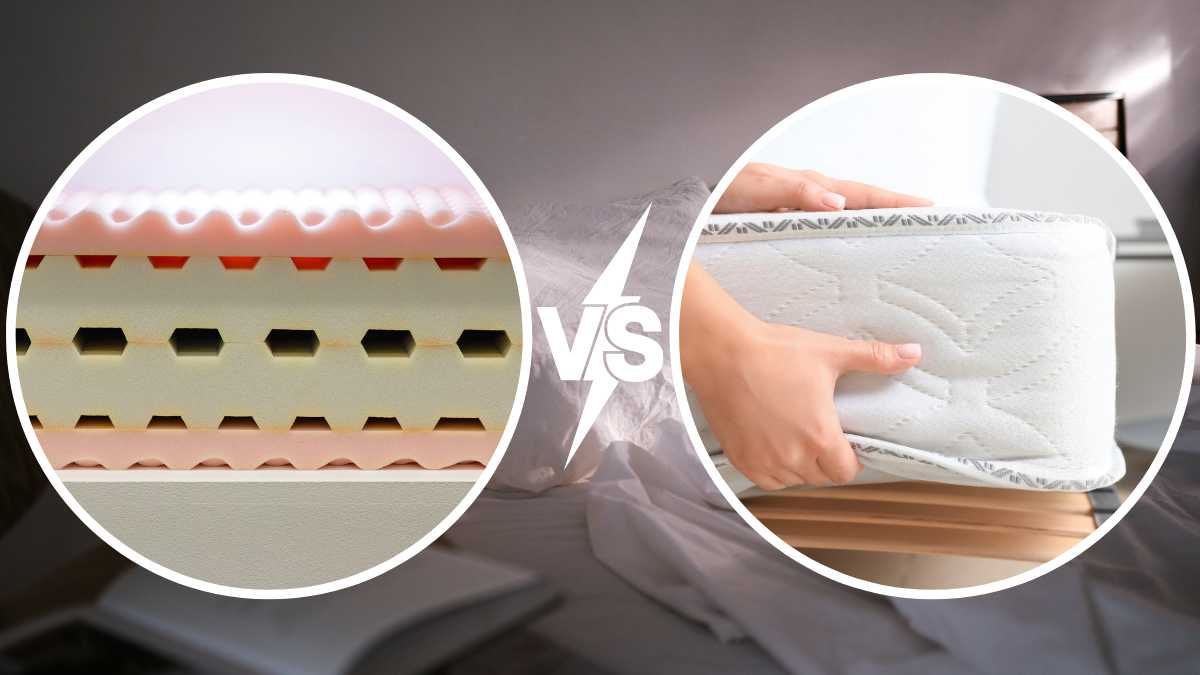
Picking a new mattress is very difficult. In an industry saturated with numerous options, it is sometimes hard to determine the best one to select between an orthopaedic or soft foam mattress. This guide thoroughly discusses the significant distinctions between these common mattress types in order to assist individuals in choosing a bed that promotes good sleep, relieves back pain, and enhances overall health.
Firm and soft mattresses also have their pros. Soft-foam molds closely around the body, relieving pressure, while orthopaedic mattresses are ultra firm and are more supportive of the spine alignment. Understanding the pros and cons of each, you focus on a suitable model in respect of your sleep positions, body type, and health needs for a good night’s sleep.
What is an Orthopaedic Mattress?
Orthopaedic mattresses are designed to promote structural alignment of the spine, neck, and joints by providing an exceptionally firm and supportive sleeping surface. They aim to reduce painful pressure points that can cause tossing, turning, and morning aches and pains.

There are several major types of orthopaedic mattresses:
- Latex – Uses either natural or synthetic latex layers to provide responsive support with some contouring ability. 100% natural latex offers resilience with pressure relief.
- Hybrid – Combines latex, memory foam, and/or gel-infused foam layers with an innerspring coil base. The springs add support while foam boosts comfort.
- Pocket sprung – Individual wrapped coils provide tailored alignment for the curves of your body. Zoned coils custom-support areas like the shoulders, back, and hips.
- Adjustable air – Uses air chambers that can be customized to your ideal firmness level, elevated for reading in bed, and more. Great for health conditions.
The common goal of all orthopaedic mattresses is to create an exceptionally rigid and sturdy platform for your body to rest on without sagging. Advanced materials like latex and pocketed coils provide slightly more “give” while maintaining proper posture alignment. However, the overall feel remains ultra-firm compared to softer foam or traditional innerspring beds. This unmatched structural durability also makes orthopaedic mattresses long-lasting, outlasting all-foam options by years.
Benefits of an Orthopaedic Mattress
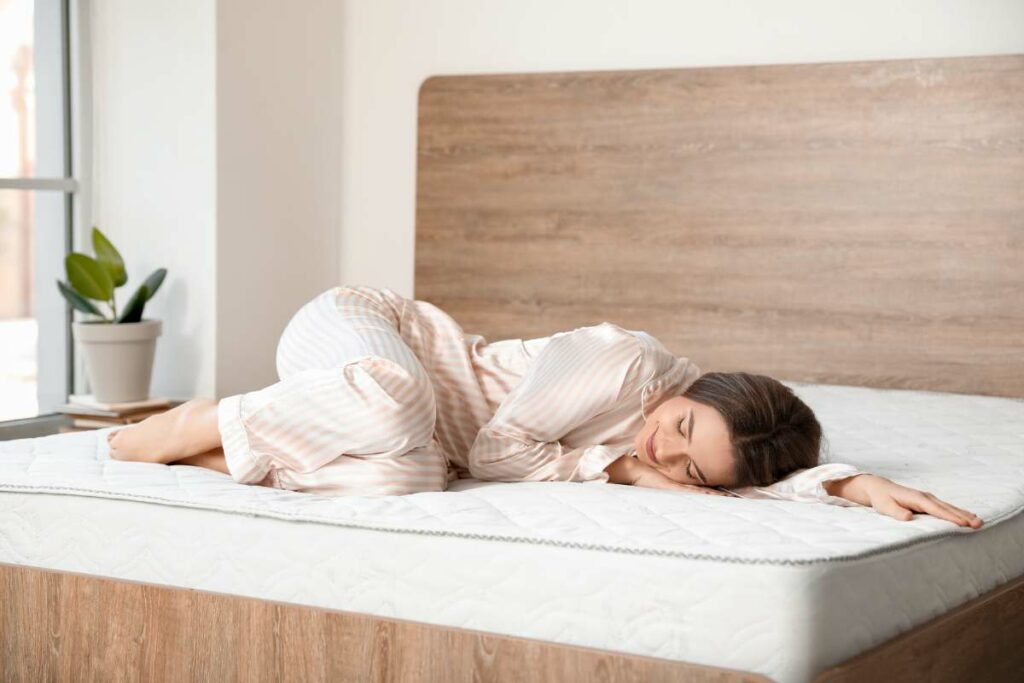
Orthopaedic mattresses excel at providing robust posture and joint support through their rigid, reinforced structure. The key benefits include:
- Relieves pain and stiffness – Orthopaedic mattresses keep the spine fully aligned and reduce pressure on joints, which alleviates pain and stiffness from conditions like arthritis or injuries. Ideal for lower back pain sufferers.
- Promotes injury healing – The firm support encourages good posture to take pressure off injuries and allow them to properly heal. Reduced inflammation and strain speed up recovery.
- Improves circulation – The reinforced spinal alignment prevents awkward bending of veins and arteries during sleep. Enhanced circulation is a boon for heart health.
- Reduces restless sleeping – The firm surface distributes body weight very evenly and reduces pressure points. This prevents tossing and turning to help you sleep soundly through the night.
- Hypoallergenic materials – Most orthopaedic mattresses use latex, pocketed coils, and certified foams, which resist dust mites, mould, and other allergens that disturb sleep.
The unmatched orthopaedic support offered by these ultra-firm mattresses makes them a top choice for those suffering from chronic pain, arthritis, fibromyalgia, injuries, or other conditions that benefit from a rigid, reinforced sleep surface. Those seeking superior back pain relief in particular find the full-body alignment significantly reduces aches and soreness.
Also read,
Is Orthopedic Mattress Good for Babies?
However, the highly rigid design does have some potential drawbacks to keep in mind:
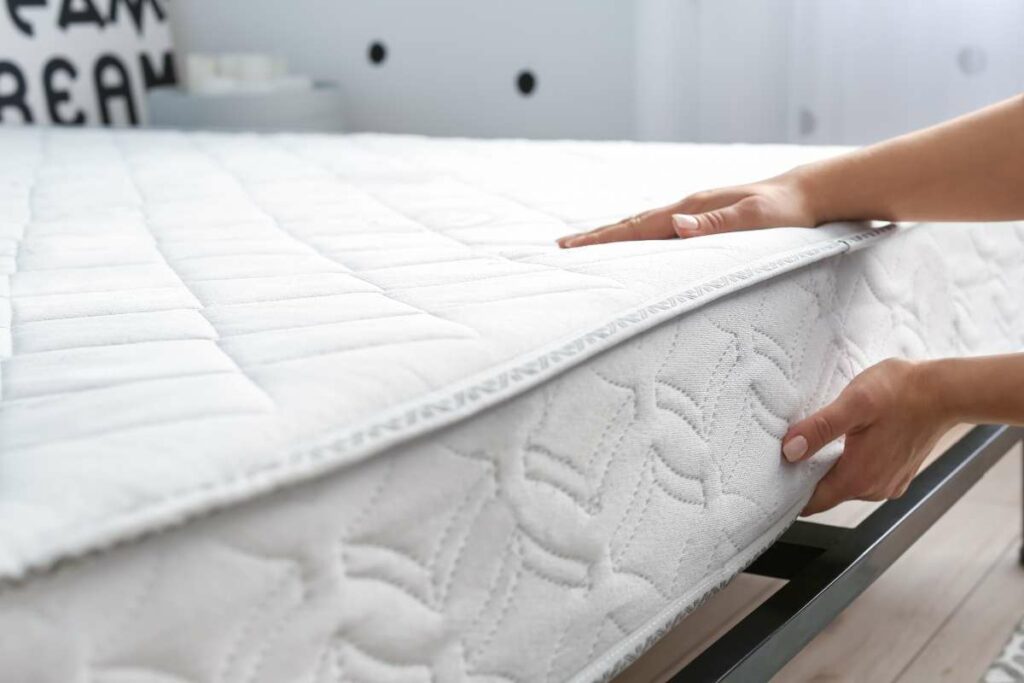
- Not ideal for side sleepers since there is insufficient contouring at the shoulders and hips in this position. Can create new pressure points.
- The very firm surface may worsen pre-existing pressure points for some sleepers by providing no localized cushioning.
- The sturdy materials like latex and steel coils result in a heavy, cumbersome mattress. Difficult to rotate or flip.
- Expensive compared to soft foam due to premium materials and construction. The average orthopaedic costs over $2000.
- Minimal motion isolation since the rigid surface transfers movement easily across the bed.
What is a Memory Foam or Soft Foam Mattress?
Memory foam mattresses widely known as soft foam mattresses as well, contour closely to the unique shape of your body using viscoelastic polyurethane foam. First developed by NASA, this innovative foam responds to body heat and weight distribution to “memorize” your curves.
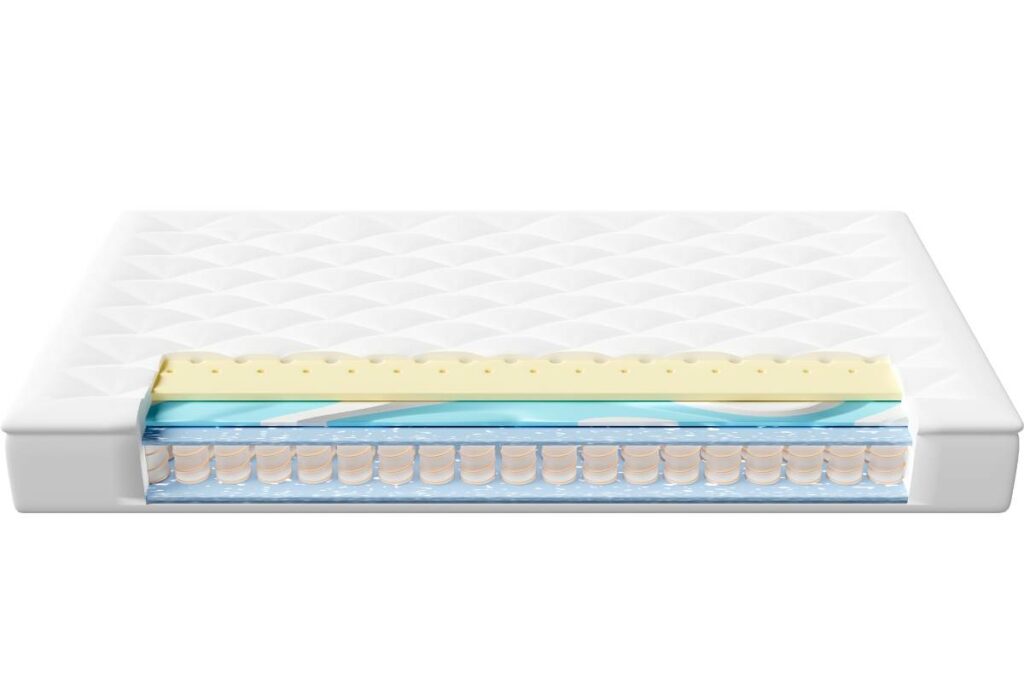
There are three main types of memory foam used in mattresses:
- Traditional memory foam softens and expands where pressure and heat are applied. Provides the closest full-body contouring but retains some heat.
- Gel-infused memory foam has cooling gels engineered into the foam formula to encourage airflow and reduce heat retention.
- Plant-based memory foam replaces a portion of petroleum with botanicals like aloe vera, green tea, and lavender for a more eco-friendly and hypoallergenic option.
High density memory foams provide the right balance of contouring and support. Low density foams may compress excessively under body weight. As memory foam technology continues advancing, options like gel and plant-based foam help alleviate downsides like heat retention.
Benefits of a Memory Foam Mattress
The highly conforming design of memory foam mattresses offers exceptional pressure point relief and tailored motion isolation:
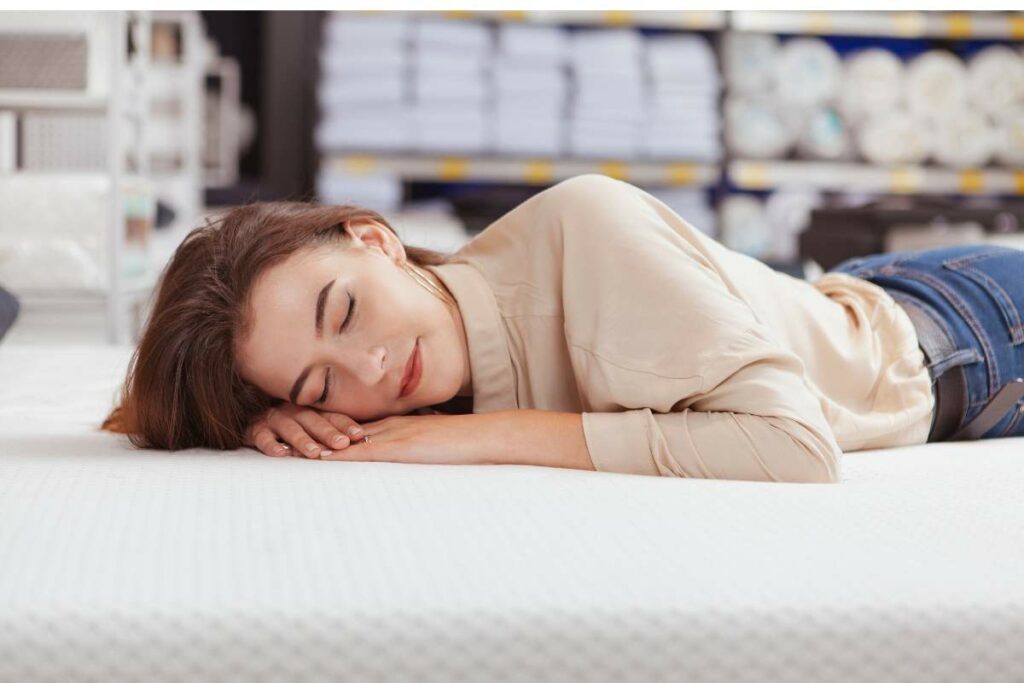
- Reduces pressure points – Memory foam cushions areas like the shoulders, hips, and back by conforming to their individual contours. This alleviates pain, numbness, and aches.
- Contours to body shape – Rather than forcing your body to conform to the surface, memory foam adapts to your shape’s natural curves for personalized comfort and support.
- Isolates motion transfer – Individualized contouring prevents motion from traveling across the mattress, so you don’t disturb your partner when changing positions or getting in and out of bed.
- Hypoallergenic – Provides an inhospitable environment for dust mites, mould, and pet dander. Certified foams are free of harmful VOCs.
- Reduces tossing and turning – The closely conforming support perfectly accommodates each body position, reducing pressure that causes restless shifting. Excellent for combination sleepers.
This advanced memory foam technology makes memory foam mattresses one of the best options for side sleepers or those who change positions frequently, as the contouring reduces joint strain. Memory foam is also ideal for couples due to the exceptional motion isolation properties.
Potential drawbacks to weigh include:

- Heat retention due to the conforming foam limiting airflow around the body. Gel-infused foams help mitigate this.
- Initial off-gassing due to the foam breaking down during the first days of use. These odours dissipate quickly.
- Softer foams may sink excessively under body weight. Avoid very low density memory foams.
- Less edge support compared to hybrid, latex, or innerspring mattresses. Install a firm border around the mattress for stability getting in and out.
- Conforming properties require regular rotation to maximize durability.
Direct Mattress Comparison
| Factor | Orthopaedic | Memory Foam/Soft Foam |
| Firmness | Very firm, little give | Medium to medium-firm, deep conforming |
| Key materials | Latex, pocketed coils | Memory foam |
| Contouring | Minimal | Maximum |
| Spinal support | Exceptional due to ultra-firmness | Moderate to good depending on foam density |
| Pressure relief | Moderate | Maximum |
| Motion transfer | High due to minimal contouring | Very low due to close contouring |
| Durability | 10+ years | 6-8 years average |
| Breathability | Excellent | Fair to good with gel foam |
| Noise | Minimal except some coil models | None |
| Initial odor | Minimal | Moderate off-gassing |
| Suitability | Back and stomach sleepers | Side and combination sleepers |
| Average cost | ₹12,000 | ₹7,000 |
| Weight | Heavy, cumbersome | Easy to move |

Choosing the Right Mattress
Determining whether an orthopaedic or memory foam mattress will be ideal for you depends on several personal factors:
- Sleeping position – Side and combo sleepers need enhanced contouring support found in memory foam. Back and stomach sleepers benefit more from the flat alignment of an orthopaedic.
- Body type – Petite or average weight individuals often find a very rigid orthopaedic surface uncomfortably firm and may feel “floating”. Heavier body types over 200lbs sink in and feel well-supported.
- Existing conditions – Those with chronic back pain, injuries, arthritis, and other impactful health issues tend to prefer an orthopaedic mattress for the superior support and pain relief. Those with minor aches prefer the cushioning comfort of memory foam.
- Personal preference – Do you like sleeping “in” your mattress with a wrapped feel or “on” your mattress with a floating feel? Memory foam hugs the body while orthopaedic cradles it.
- Combination sleepers – Frequent position changes are better accommodated by the contouring responsiveness of memory foam.
- Eco-friendliness – If environmental impact is a major concern, plant-based memory foam or natural latex are the most sustainable options.
- Allergies – Both orthopaedic and memory foam resist dust mites. Latex and plant-based foams are optimal for allergy sufferers.
- Sharing with a partner – Memory foam’s motion isolation makes it ideal for couples, while orthopaedic permits some transfer.
- Budget – Orthopaedic mattresses start around ₹12,000 while quality memory foam can be found between ₹7,000 – 8,000.
Wakefit Orthopedic Memory Foam Mattress 6-Inch King Size 78x72x6 Inches White
Rs. 12,997 in stock
Wakeup Memory Foam Mattress | 10 Year Warranty | Orthopedic Mattress, Queen Bed Medium Firm Mattresses | Memory Foam 5 inch Mattresses (Queen Size, 72x60x5 inch, White)
Rs. 8,841 in stock
Springtek Amaze Eco 4-Inch Medium Firm Single Size High Density (HD Foam Mattress (72X36X4 Inches, 2 Year Warranty
Rs. 3,100 in stock
Those experiencing back or joint pain will also want to consult their doctor on whether an ultra-firm orthopaedic or contouring memory foam mattress will provide greater relief for their specific condition. Doctors may be able to provide personalized advice and mattress recommendations based on your medical needs.
Further considerations like pregnancy, allergies, sharing the bed with a partner, budget constraints, and environmental priorities can all steer you towards the ideal mattress variety. Don’t hesitate to test out both in-store for an extended time to gauge which provides greater comfort and support. Most quality manufacturers allow for 100+ night in-home trials as well so you can evaluate your chosen mattress over several weeks within your normal sleep environment.
Hybrid Mattress Options
For those seeking a balance between the custom support of memory foam and unmatched firmness of an orthopaedic mattress, hybrid models combine the best of both worlds:
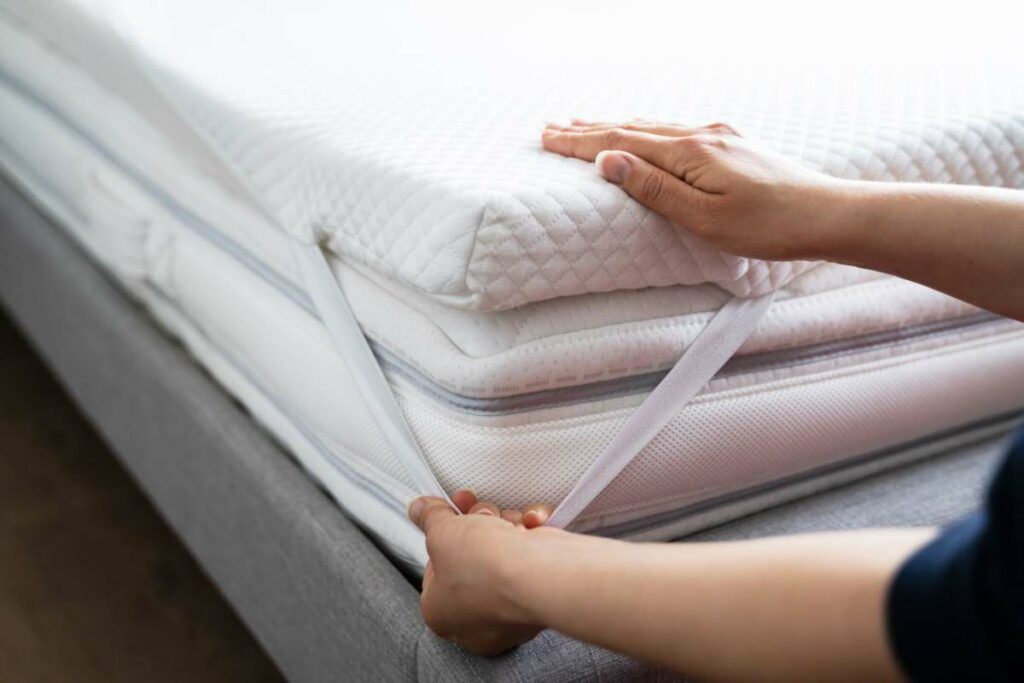
- Coil and latex hybrids – Innersprings reinforced with latex deliver responsive contouring with optimal spine support.
- Coil and memory foam hybrids – Pocketed coils paired with memory foam relieve pressure points while keeping the back aligned.
- Latex and memory foam hybrids provide pressure relief and healthy support.
Adjustable air chambers layered with latex or memory foam are another excellent hybrid possibility, allowing you to find your ideal firmness and support levels. By blending the key benefits of different mattress materials, hybrids offer a versatile solution.
Which Is Right for You?
Ultimately, choosing between the enhanced alignment and sturdiness of an orthopaedic mattress or the close contouring and pressure relief of memory foam comes down to your individual needs and preferences.
By carefully weighing your typical sleeping positions, body type, existing pains, health conditions, budget, and personal inclinations, you can determine which style will best support your sleep. If you tend to sleep in multiple positions or suffer from chronic pain, a medium-firm memory foam mattress often provides the most adaptable support and cushioning.
For those primarily seeking advanced spinal reinforcement plus pinpointed pressure point relief, a zoned pocketed coil orthopaedic mattress excels. Side sleepers almost always benefit more from the contouring properties of memory foam or latex versus pure orthopaedic firmness.
How many inches of mattress are best?
Experts generally recommend selecting a mattress between 10 to 14 inches thick. Recommended Mattress Thickness by Type
| Mattress Type | Recommended Thickness |
| Memory foam | 10 – 14 inches |
| Innerspring | 10 – 15 inches |
| Latex | 8 – 12 inches |
| Hybrid | 12 – 16 inches |
Memory foam mattresses contour closely to the body and are known for above-average pressure relief. Most memory foam beds range from 10 to 14 inches thick, with thicker options providing more cushioning for side sleepers. Many memory foam mattress brands offer a high-density foam support core of 6 to 8 inches stacked with 2 to 3 inches of memory foam.
Innerspring mattresses have coil systems ranging from 5.5 to 8 inches tall. When you add padding layers on top, most end up between 10 to 15 inches thick. Thin innerspring models under 10 inches may not have enough padding, while ultra thick pillowtops over 15 inches could let sleepers sink in too deeply.
Latex mattresses provide responsive support with quicker rebound than memory foam. A standard all-latex mattress is often 8 to 10 inches tall, with 3 inches of latex over a 5 inch base layer. Thicker latex beds with extra comfort layers can reach up to 12 inches high or more.
Hybrid mattresses combine coil support cores with thick foam comfort layers for a versatile feel. Most hybrids range between 12 to 16 inches thick. Brands use taller coil systems around 8 inches paired with several foam layers to prevent “bottoming out” in the mattress.
When deciding the best thickness, sleep position and body type play a role. Side sleepers and those over 230lbs may prefer a thicker mattress from 12 to 14 inches. Stomach sleepers or petite people under 130lbs often do better with a thinner, more responsive mattress under 12 inches. No matter your preferences, aim for a mattress between 10 to 14 inches thick for the best blend of comfort, support and durability.
With this comprehensive mattress guide’s insights, you should feel equipped to find the ideal mattress technology and firmness to significantly enhance your sleep quality, spinal health, and pain relief for years to come. Investing in the comfort and support specifically tailored to your body will provide dividends through improved sleep and daily energy.









